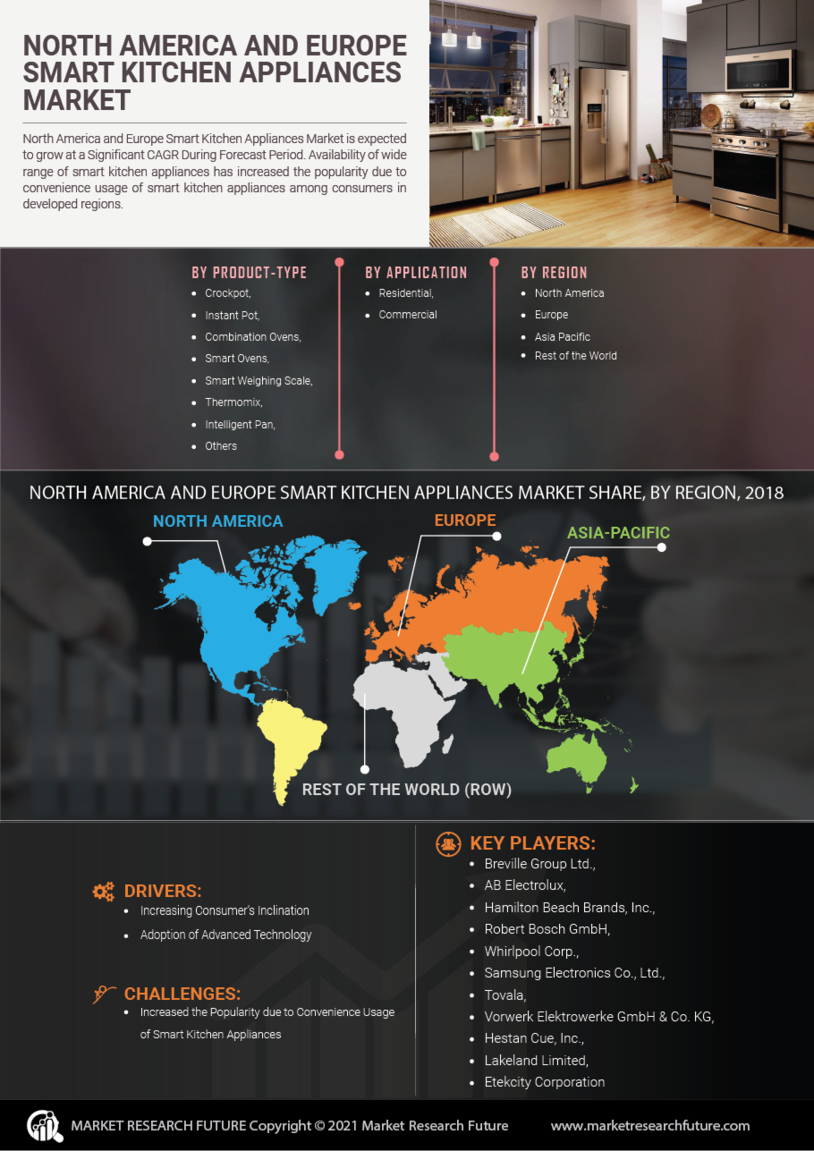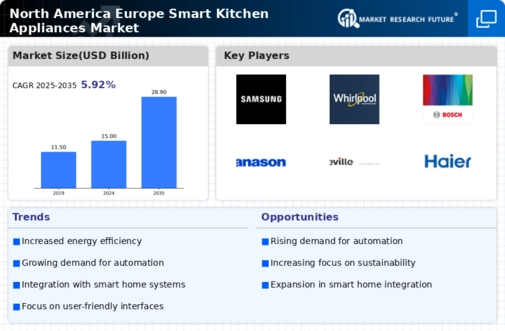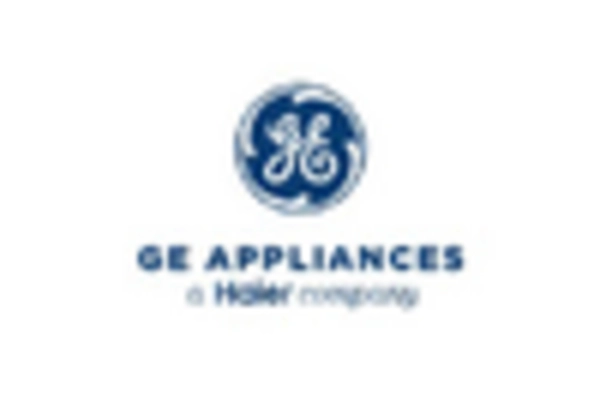Market Growth Projections
The North America Europe Smart Kitchen Appliances Industry is poised for substantial growth, with projections indicating a market value of 15.0 USD Billion in 2024 and an anticipated increase to 28.9 USD Billion by 2035. This growth trajectory suggests a compound annual growth rate (CAGR) of 6.14% from 2025 to 2035. Factors contributing to this expansion include rising consumer demand for convenience, technological advancements, and a growing focus on energy efficiency. As the market evolves, it is likely to witness the introduction of innovative products that cater to the changing needs of consumers, further driving growth.
Health and Wellness Trends
Health and wellness trends are becoming a driving force in the North America Europe Smart Kitchen Appliances Industry. Consumers are increasingly prioritizing healthy eating and cooking practices, leading to a demand for appliances that facilitate nutritious meal preparation. Smart kitchen devices, such as air fryers and steamers, enable users to prepare healthier meals with less oil and fat. This shift towards health-conscious cooking is reflected in the growing market, which is expected to reach 28.9 USD Billion by 2035. As consumers become more aware of the impact of their dietary choices, the demand for smart appliances that support healthy lifestyles continues to rise.
Growing Focus on Energy Efficiency
The North America Europe Smart Kitchen Appliances Industry is increasingly influenced by a growing focus on energy efficiency. Consumers are becoming more environmentally conscious, seeking appliances that reduce energy consumption and lower utility bills. Smart appliances, such as energy-efficient dishwashers and refrigerators, often come with features that optimize energy use based on user habits. This trend is supported by government initiatives promoting energy-efficient technologies, which further incentivize consumers to invest in smart kitchen solutions. Consequently, the market is projected to witness a compound annual growth rate (CAGR) of 6.14% from 2025 to 2035, reflecting the rising demand for sustainable kitchen appliances.
Integration of Smart Home Ecosystems
The integration of smart home ecosystems significantly impacts the North America Europe Smart Kitchen Appliances Industry. As consumers increasingly adopt smart home technologies, there is a growing expectation for kitchen appliances to seamlessly connect with other smart devices. For instance, smart kitchen appliances can be controlled via voice assistants or smartphone applications, allowing for enhanced automation and convenience. This interconnectedness not only improves user experience but also encourages the adoption of smart kitchen solutions. The market's expansion is indicative of this trend, as consumers seek appliances that contribute to a cohesive smart home environment.
Rising Consumer Demand for Convenience
The North America Europe Smart Kitchen Appliances Industry experiences a notable surge in consumer demand for convenience-driven solutions. As lifestyles become increasingly hectic, consumers seek appliances that simplify meal preparation and cooking processes. For instance, smart ovens and multi-cookers allow users to prepare meals with minimal effort, often through smartphone applications. This trend is reflected in the projected market value of 15.0 USD Billion in 2024, indicating a robust appetite for innovative kitchen technologies. The convenience factor not only enhances user experience but also drives the adoption of smart appliances across diverse demographics.
Technological Advancements in Smart Appliances
Technological advancements play a pivotal role in shaping the North America Europe Smart Kitchen Appliances Industry. Innovations such as artificial intelligence, machine learning, and IoT integration enhance the functionality and efficiency of kitchen appliances. For example, smart refrigerators equipped with inventory management systems can track food items and suggest recipes based on available ingredients. These advancements not only improve user convenience but also promote energy efficiency, aligning with sustainability goals. As a result, the market is expected to grow significantly, reaching an estimated 28.9 USD Billion by 2035, driven by continuous technological evolution.

















Leave a Comment